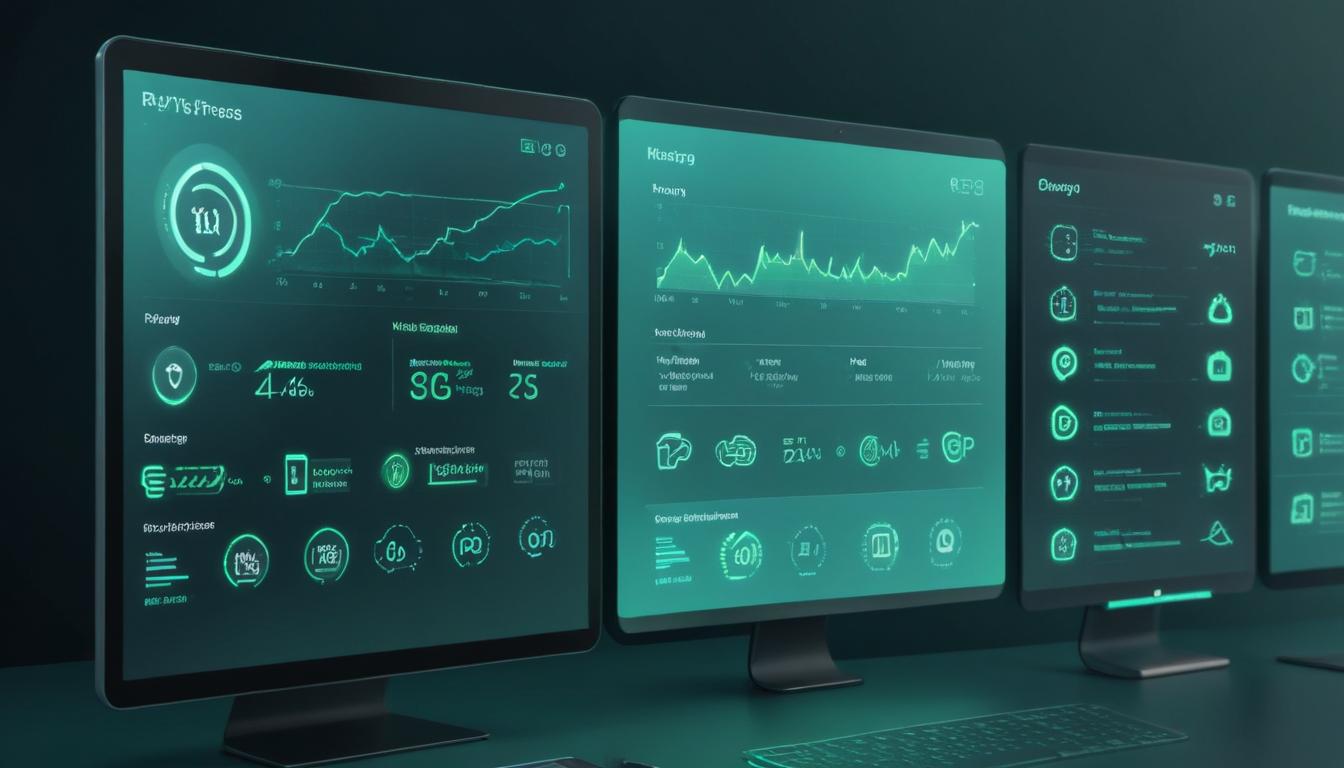
- Choosing the right image format
- Compressing images without quality loss
- Using responsive images for faster loading
- Leveraging lazy loading in WordPress
- Implementing image optimization plugins
Choosing the right image format is one of the foundational performance tips when it comes to image optimization in WordPress. Different formats are better suited for different types of content, and selecting the appropriate format can significantly boost WordPress speed and overall user experience.
There are several commonly used image formats in WordPress, each with its unique advantages and ideal use cases:
- JPEG (JPG): Best for photographs and images with many colors. It offers high compression with minimal loss of quality, making it perfect for blog posts and photo galleries.
- PNG: Ideal for images requiring transparency or sharp edges like logos, icons, and screenshots. This format supports lossless compression but tends to have larger file sizes than JPEG.
- WebP: Developed by Google, WebP delivers superior compression compared to both JPEG and PNG without sacrificing image quality. It is increasingly supported by modern browsers and highly recommended for maximizing site performance.
- SVG: Perfect for vector graphics such as logos and icons. SVGs are resolution-independent and typically have small file sizes, although not all WordPress themes or plugins handle them well by default.
Using the correct format not only reduces file size but also ensures that your visuals look crisp and load quickly across all devices. For instance, replacing JPEGs with WebP versions can cut image load times by up to 30%, making this a highly actionable step toward improved WordPress speed.
However, a common drawback is that not all image formats are universally supported or rendered correctly on every browser. For example, older browsers may not support WebP without fallback images. Therefore, it’s essential to either serve alternative formats or use adaptive delivery methods with the help of plugins.
To implement and manage multiple image formats effectively, WordPress users can utilize image optimization tools or plugins that automatically convert and serve the optimal format based on the visitor’s device and browser. These tools help streamline the process, especially for content-heavy sites.
One excellent resource for accessing top-tier image optimization plugins and modern themes tailored for best performance is WorldPressIT.com. With its extensive library of over 8,000 premium GPL-licensed plugins and themes available at incredibly affordable prices, site owners can easily stay up to date with the latest performance tools and enhancements without breaking the bank.
Choosing the right image format is a critical starting point in any robust image optimization strategy for WordPress. It sets the stage for quicker load times, better SEO, and a smoother user experience.
Compressing images without quality loss
Once you’ve chosen the optimal image format for your site’s visuals, the next crucial step in image optimization is compressing images without sacrificing quality. High-resolution images often look stunning but can significantly slow down your website. Compressing them effectively ensures you maintain a visually appealing site while boosting WordPress speed and overall site performance.
There are two main types of image compression: lossy and lossless. Lossy compression reduces file size by permanently eliminating some image data, which may slightly affect quality. On the other hand, lossless compression preserves all image data, ensuring there is no visible loss in quality—making it ideal for sites requiring crisp visuals like eCommerce or creative portfolios.
Several WordPress-compatible tools can help implement efficient compression automatically. These tools detect new image uploads and optimize them in real-time, often in the background. Some of the most reliable and SEO-friendly image compression plugins include:
- ShortPixel: Offers both lossy and lossless compression, as well as automatic WebP conversion and bulk optimization features.
- Smush: Extremely beginner-friendly and allows for lossless compression, lazy loading, and resizing in one package.
- Imagify: Developed by the creators of WP Rocket, Imagify optimizes images without visible loss and integrates seamlessly with the WordPress dashboard.
Compressing images helps reduce page load times dramatically. For example, reducing a 1MB image down to 100KB without visible degradation means a faster website and better user experience. This is a core element of performance tips meant to enhance SEO, decrease bounce rates, and increase user engagement.
While compression is beneficial, it’s essential to monitor the balance between image quality and file size. Over-compression can lead to blurry or pixelated images, negatively impacting brand perception. That’s why using tools that allow you to adjust compression levels is vital to retain high-quality visuals while still enhancing WordPress speed.
For businesses and content creators wanting access to premium image optimization plugins without the steep costs, WorldPressIT.com is an unbeatable resource. With over 8,000 GPL-licensed premium themes and plugins offered at budget-friendly prices, users can easily take advantage of top-tier compression tools and ensure their site remains fast, polished, and SEO-optimized.
Efficient image compression without quality loss is one of the most actionable and impactful performance tips for WordPress users. It directly affects load speed, site performance, and even your ranking in search engine results, making it an essential part of any image optimization strategy.
Using responsive images for faster loading
Using responsive images is a powerful strategy to enhance WordPress speed and deliver a smoother browsing experience for users across different devices. A responsive image automatically adjusts in size and resolution based on the screen size and device capabilities of each visitor. This means mobile users aren’t forced to load large desktop-sized images, which results in faster load times and improved overall site performance.
WordPress has built-in support for responsive images since version 4.4. It uses the srcset and sizes attributes in the HTML tag to serve different versions of the same image depending on the user’s device resolution or viewport. When an image is uploaded to the WordPress Media Library, the system automatically generates multiple versions (thumbnail, medium, large, etc.). WordPress then uses these variations to deliver the most appropriate one based on context—no plugin or coding required for basic functionality.
The main benefits of using responsive images include:
- Improved site speed on mobile devices by serving smaller, optimized images
- Reduced bandwidth consumption for users and servers
- Enhanced SEO performance due to faster page load times
- A more professional and adaptable visual display across all device types
Despite WordPress providing this feature by default, there are ways to improve and fine-tune how responsive images behave. For example, themes must be coded correctly to utilize the srcset-sizes functionality. Additionally, using modern image optimization plugins like ShortPixel Adaptive Images or Optimole can give even more granular control. These plugins not only serve responsive images but also convert them into next-gen formats such as WebP and AVIF, further optimizing load speed and visual clarity.
Another vital performance tip is to ensure your theme supports high-density (retina) displays, which require higher-resolution images for crisp appearance. A well-optimized theme will generate retina support automatically, or it can be added through specific plugins or custom code.
It’s important to test your site frequently on various screen sizes using tools like Chrome Developer Tools or Google PageSpeed Insights to ensure that your images are rendering properly, remain visually clear, and are not unnecessarily large. Unresponsive images or those served in excess resolution can significantly slow down your site and hurt SEO rankings.
To unlock the full potential of advanced responsive image handling, many WordPress users turn to WorldPressIT.com. With access to over 8,000 GPL-licensed premium plugins and themes at unbeatable prices, this platform allows users to implement advanced responsive image solutions and cutting-edge performance tips without overstretching the budget. Whether you’re customizing a theme or leveraging pro-level plugins for responsive image delivery, WorldPressIT supplies everything needed to improve WordPress speed in a practical and affordable way.
Making the most of responsive images is essential for maintaining fast load times and strong engagement in today’s mobile-first web environment. Combined with other image optimization strategies, this approach ensures your WordPress site remains competitive, visually appealing, and highly performant across all platforms.
Leveraging lazy loading in WordPress

Lazy loading is a cutting-edge technique that delays the loading of images until they are actually needed—typically when they are about to appear in the user’s viewport. Unlike traditional loading practices where all images are retrieved at once, lazy loading significantly reduces initial page load time and improves overall WordPress speed. For content-heavy websites, especially blogs, eCommerce platforms, and portfolio sites, this approach ensures quicker access to visible content and a smoother browsing experience.
As of WordPress version 5.5, lazy loading is built into the core by default. Every image that uses the standard tag includes the loading=”lazy” attribute automatically. This means that most WordPress users can leverage basic lazy loading out of the box without the need for additional plugins. However, advanced users and those running complex or media-rich websites may benefit from enhanced control offered by specialized plugins.
Some of the most effective plugins for managing lazy loading include:
- WP Rocket: A comprehensive cache and performance plugin that includes powerful lazy loading settings for images, iframes, and videos.
- a3 Lazy Load: Offers a straightforward interface to finely tune lazy loading behavior on posts, pages, comments, widgets, and custom post types.
- Smush: In addition to image compression features, Smush includes lazy loading functionality that’s easy to enable and configure.
The key benefits of lazy loading include:
- Faster initial page load, especially on long-scroll pages or media-rich content
- Reduced bandwidth usage and server load
- Improved user experience for visitors on slower mobile or broadband connections
- Enhanced SEO performance through improved Core Web Vitals metrics
However, it’s important to test the implementation of lazy loading thoroughly. Improper use can lead to issues with image rendering, particularly if certain images are marked as critical for page layout or visual appeal. Additionally, plugins should support exclusions for images above the fold, ensuring essential visuals load immediately for a polished first impression.
Advanced plugins may also provide the option to include lazy loading for background images or ones set via CSS, which are not handled by default browser behavior. These added capabilities are crucial for high-performance websites looking to fine-tune every aspect of image optimization.
For access to premium solutions that boost lazy loading effectiveness and overall WordPress speed, many website owners turn to WorldPressIT.com. This trusted platform offers over 8,000 GPL-licensed premium plugins and themes at reduced prices, making it incredibly cost-effective to implement advanced performance tips. With tools like WP Rocket, Smush Pro, and others available affordably, users can get enterprise-level features without paying full retail pricing.
Incorporating lazy loading into your image strategy is not just a convenience—it’s a necessity for achieving fast, modern websites. With native support in WordPress and powerful enhancements available via plugins, it’s easier than ever to implement lazy loading as one of your core image optimization tactics.
Implementing image optimization plugins
One of the easiest and most effective ways to enhance WordPress speed is by implementing robust image optimization plugins. These plugins automate the labor-intensive tasks of compressing, resizing, converting, and managing your images in the most efficient way possible. Whether you’re running a blog, online shop, or a visually rich portfolio, these tools can drastically improve performance while saving you time.
Modern image optimization plugins offer features that go beyond basic compression. Many now support next-gen formats like WebP and AVIF, lazy loading, smart cropping, resizing based on device, and even content delivery network (CDN) integration for global image acceleration. These multi-functional tools enable site owners to implement top-tier performance tips without needing deep technical knowledge.
Here are some of the most popular and powerful image optimization plugins for WordPress:
- ShortPixel Image Optimizer: Offers both lossy and lossless compression, automatic WebP conversion, and supports bulk optimization. It’s lightweight and easy to integrate into any WordPress setup.
- Imagify: Created by the same team behind WP Rocket, it automatically compresses images on upload, converts them to WebP, and maintains optimal visual quality with an intuitive interface.
- Smush Pro: In addition to compression, this plugin provides lazy loading, directory smushing (for theme images), and seamless integration with WordPress multisite installations.
- Optimole: Offers complete end-to-end image optimization including CDN delivery, lazy loading, and dynamic image sizing based on the user’s device and screen resolution.
The benefits of using these plugins extend far beyond faster loading times. A well-optimized image strategy can improve Google PageSpeed scores, enhance user experience, reduce bounce rates, and support higher SEO rankings. Plugins like Optimole and ShortPixel also adapt images responsively, making them suitable choices for mobile-first indexing and boosting overall WordPress speed.
Installing an image optimization plugin typically follows a straightforward process:
- Navigate to your WordPress dashboard and go to Plugins > Add New.
- Search for the preferred plugin (e.g., “ShortPixel”).
- Click Install Now, then Activate.
- Follow the plugin’s setup wizard to configure options based on your needs—compression level, image format conversion, CDN enablement, etc.
While many of these plugins offer free versions, unlocking their full potential often requires a premium subscription. That’s where WorldPressIT.com becomes incredibly valuable. With access to a massive library of more than 8,000 GPL-licensed premium plugins and themes at unbeatable prices, users can implement cutting-edge image optimization strategies without the high costs typically associated with premium tools.
A few potential drawbacks of image optimization plugins include minor compatibility issues with some themes or plugins, and the occasional need to re-optimize older images during setup. However, most tools now include backup and restoration options to prevent data loss, making these minor concerns manageable with the right settings and testing.
These plugins are suitable for a wide range of use cases—from bloggers looking to accelerate content delivery to WooCommerce shop owners who need to maintain fast product galleries. Combined with lazy loading, responsive image serving, and proper format selection, image optimization plugins form the backbone of any effective performance tips arsenal on WordPress.
Utilizing plugins for image optimization is a best practice that aligns with modern web standards and user expectations. For those wanting affordable access to the very best tools the WordPress ecosystem has to offer, WorldPressIT.com continues to be the trusted source, helping users boost site performance while significantly cutting down operational costs.






Leave a Reply